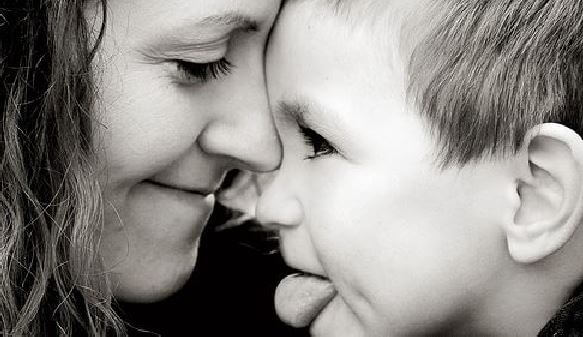Too Many Toys Syndrome

Have you ever noticed that your children are no longer as excited to receive gifts as they used to be? Or perhaps they have too many toys and even get bored of them? Do you think that the children of today are losing the power of imagination?
If you’ve answered yes to any one of these questions, then the reality of today’s children may have to do a lot with the excess of gifts and objects that they receive.
This is particularly relevant during the holiday season, and it is very important for us to pay special attention to this topic. In this article we’ll share tips on how to deal with the “too many toys syndrome.”

What is the too many toys syndrome?
Mom orders a porcelain doll, the grandparents a kitchenette, the other grandparents buy a race car. We cannot forget about the uncle who wants to buy the child a pair of skates and the aunt who wants to buy her nephew some plasticine.
So in total, without counting friends and various other commitments, within the family nucleus in our given example, there are already 5 non-negotiable gifts that our child will receive.
This results in a lack of concentration and imagination in our children. It can also lead to frustration. These children don’t have the opportunity to value the effort needed to accomplish tasks because they always get what they want regardless.
Worst of all, this problem has started to spread due to social consumerism. Children are starting to expect expensive toys and gifts every day of the year.
Sometimes we give our children too many gifts in order to make up for attention that we do not give them on a day-to-day basis, thinking that gifts will make them happier. On the contrary, this behavior can be very harmful to a child’s development.

What can we do during Christmas, birthdays and other celebrations?
Although this problem is present throughout the year, the truth is that it is accentuated at certain times such as holidays and birthdays.
We have to understand that giving gifts to our children unreasonably does not translate into greater affection. Affection, unlike gifts, should be offered to them every day through little details and gestures.
We should adhere as much as possible to the four-gift rule. This is the amount of gifts that experts recommended. In order to properly carry out the rule we must follow some criteria.
- One of the gifts should be something that the child actually needs.
- Another should be something they want (here we can accommodate those toys or their commercial requests).
- A gift to wear, such as clothes or accessories.
- Something that helps them promote the habit of reading.
It won’t be easy reducing the amount of gifts that your child should receive at once. It is important for us to explain to our family members and loved ones that the child needs to value what they already have and learn to enjoy objects naturally.

When we say “naturally” we refer to what we all understand as “having fun as a child.” Children can be the perfect definition of entertainment and happiness.
We should pay special attention to preserve their innocence and their capacity to have fun which is so characteristic of childhood. A child should be able to play without having any toys, we should not take that ability away from them.
Accompanying this article, we’d like to recommend that you watch the following video of a Christmas campaign that exemplifies what children really need: our company, affection and time.
They only need our time in order to feel the true love that will help them grow up to be genuinely healthy and happy.
Have you ever noticed that your children are no longer as excited to receive gifts as they used to be? Or perhaps they have too many toys and even get bored of them? Do you think that the children of today are losing the power of imagination?
If you’ve answered yes to any one of these questions, then the reality of today’s children may have to do a lot with the excess of gifts and objects that they receive.
This is particularly relevant during the holiday season, and it is very important for us to pay special attention to this topic. In this article we’ll share tips on how to deal with the “too many toys syndrome.”

What is the too many toys syndrome?
Mom orders a porcelain doll, the grandparents a kitchenette, the other grandparents buy a race car. We cannot forget about the uncle who wants to buy the child a pair of skates and the aunt who wants to buy her nephew some plasticine.
So in total, without counting friends and various other commitments, within the family nucleus in our given example, there are already 5 non-negotiable gifts that our child will receive.
This results in a lack of concentration and imagination in our children. It can also lead to frustration. These children don’t have the opportunity to value the effort needed to accomplish tasks because they always get what they want regardless.
Worst of all, this problem has started to spread due to social consumerism. Children are starting to expect expensive toys and gifts every day of the year.
Sometimes we give our children too many gifts in order to make up for attention that we do not give them on a day-to-day basis, thinking that gifts will make them happier. On the contrary, this behavior can be very harmful to a child’s development.

What can we do during Christmas, birthdays and other celebrations?
Although this problem is present throughout the year, the truth is that it is accentuated at certain times such as holidays and birthdays.
We have to understand that giving gifts to our children unreasonably does not translate into greater affection. Affection, unlike gifts, should be offered to them every day through little details and gestures.
We should adhere as much as possible to the four-gift rule. This is the amount of gifts that experts recommended. In order to properly carry out the rule we must follow some criteria.
- One of the gifts should be something that the child actually needs.
- Another should be something they want (here we can accommodate those toys or their commercial requests).
- A gift to wear, such as clothes or accessories.
- Something that helps them promote the habit of reading.
It won’t be easy reducing the amount of gifts that your child should receive at once. It is important for us to explain to our family members and loved ones that the child needs to value what they already have and learn to enjoy objects naturally.

When we say “naturally” we refer to what we all understand as “having fun as a child.” Children can be the perfect definition of entertainment and happiness.
We should pay special attention to preserve their innocence and their capacity to have fun which is so characteristic of childhood. A child should be able to play without having any toys, we should not take that ability away from them.
Accompanying this article, we’d like to recommend that you watch the following video of a Christmas campaign that exemplifies what children really need: our company, affection and time.
They only need our time in order to feel the true love that will help them grow up to be genuinely healthy and happy.
All cited sources were thoroughly reviewed by our team to ensure their quality, reliability, currency, and validity. The bibliography of this article was considered reliable and of academic or scientific accuracy.
- Caron, A., & Ward, S. (1975). Gift decisions by kids and parents. Journal of Advertising Research, 15(4), 15-20. https://www.researchgate.net/profile/Andre_Caron/publication/275353453_Gift_decisions_by_kids_and_parents_Journal_of_Advertising_Research_154_15-20/links/587e51af08ae9275d4eb8f1b/Gift-decisions-by-kids-and-parents-Journal-of-Advertising-Research-154-15-20.pdf
This text is provided for informational purposes only and does not replace consultation with a professional. If in doubt, consult your specialist.








